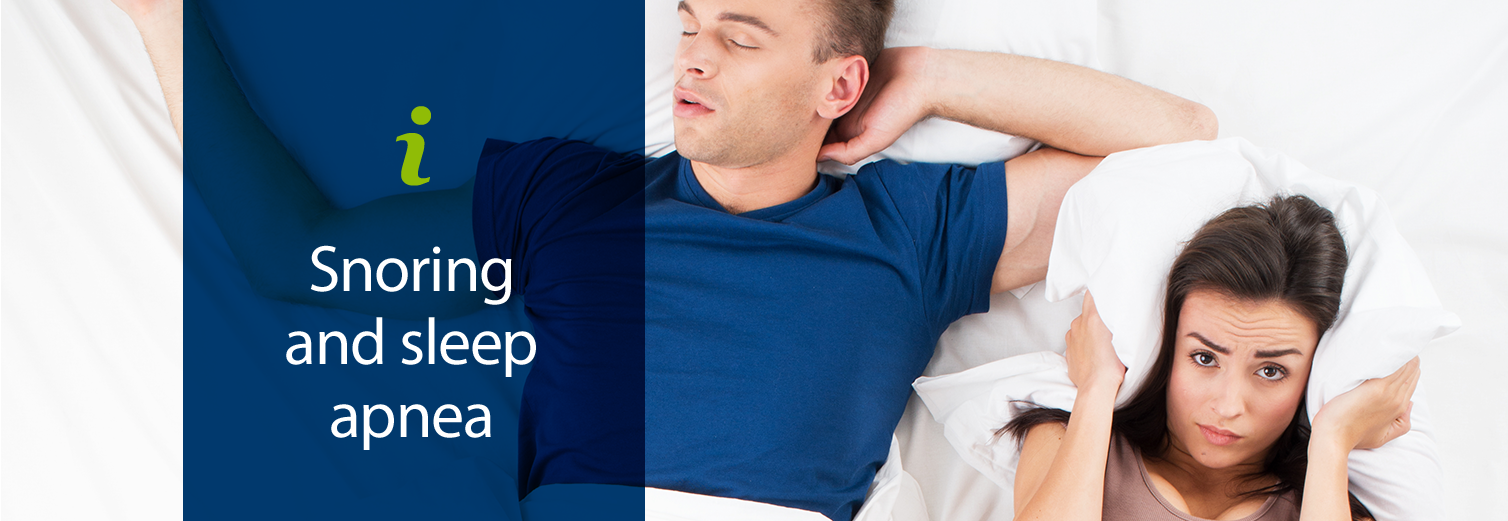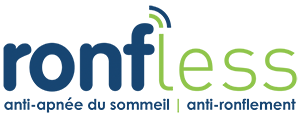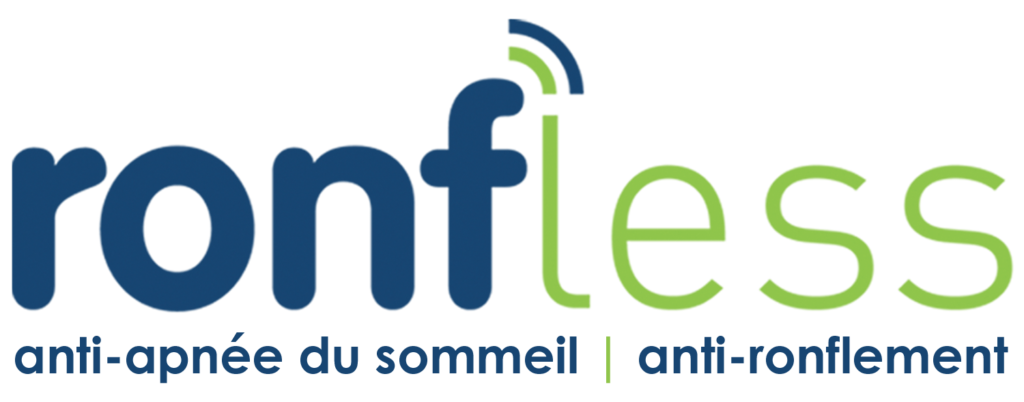We talk about sleep apnea when pauses in breathing lasting at least 10 seconds occur during the sleep, these pauses will spoil the quality of your sleep and have dire consequences during daytime. Among sleep apneas we can distinguish :

Obstructive apnea, the most frequent one, which affects around 8% of the population (1)
Central apnea,
Mixed Apnea, both obstructive and central apnea. (2)
We will just focus here on obstructive sleep apnea, also referred to as Obstructive Sleep Apnea – Hypopnea Syndrome.
Sleeping on your back favours obstructive sleep apnea(1) and Ronfless® is highly recommended in this case. Obstructive sleep apnea as well as central and mixed apnea require an appropriate medical diagnosis and supportive care: see your doctor for advice.
We talk about sleep apnea when repeated pauses in breathing linked to an obstruction of the airways occur during your sleep and last for at least 10 seconds. These pauses are called sleep apneas when the obstruction is complete or hypopneas when it is partial. (3)
It is necessary to go back to the origin of snoring to fully understand this affliction: we snore because during the night our muscles loosen up: those of our arms and legs but also of our throat. While we are relaxing, our muscles and the floppy tissues of the throat collapse, obstructing the airways. Yet airflow must remain constant to ensure a good oxygenation, that’s why our respiratory systems takes deeper breath-ins, making the walls of our throat vibrate and causing snoring. (1)
When the walls of your throat totally collapse, the airway is blocked, the muscles in the back of your throat fail to keep the airway open: this is what we callsleep apnea. It will lead to oxygen deprivation: the brain will wake the sleeper up for a short while allowing the muscles of the throat to recover their tonicity and to let you breathe out. Sleepers usually don’t remember these « « micro awakenings” nor the poor quality of their sleep.(1)
Several factors favor obstructive sleep apnea: :
• Overweight and obesity,
• Age: obstructive sleep apnea is more common among the 45/64 age group,
• Nasal-related obstruction problems, linked to allergies and surgeries ,
• Genetic and anatomical specificities,
• Consumption of alcohol, sedatives or cigarettes,
• Supine position. (4)
Around 40% of the people who suffer from obstructive sleep apnea suffer in fact from positional sleep apnea(4,5): The pauses in breathing while sleeping on your back are much more frequent than when you sleep on your side. That is the reason why it is much safer when you suffer from positional obstructive sleep apnea to learn not to sleep on your back and adopt a position on your stomach or side during the night.
Around 40% of the people who suffer from obstructive sleep apnea suffer in fact from positional sleep apnea

If you believe you are suffering from obstructive sleep apnea it is highly recommended to see your doctor. The diagnosis will be confirmed by an in-lab overnight sleep study at a sleep unit or by a home-sleep apnea test which will record your sleep. If the diagnosis is confirmed, your doctor will prescribe a suitable treatment, according to the seriousness of the apnea. (7,8)
• Hygienic and dietary measures : whatever the seriousness of your sleep disorders these latter have to be taken into account. If your snoring is light, these measures can be sufficient to handle the problem. These measures include losing weight if you are overweight, decreasing your alcohol and cigarette consumption and adopting a good position when falling asleep: on your stomach or on your side as sleeping on your back favors and makes obstructive sleep apnea worse. (7)
• The wearing of a mandibular protrusion orthesis : is recommended to treat moderate forms of sleep apnea. It consists of a dental appliance which is worn at night and which will push the lower jaw forward, preventing the tongue from falling back and blocking the airways during sleep. Please note that the protrusion orthesis must be worn permanently to be effective while Ronfless® is only temporary: once you got used to stopping sleeping on your back, you will stop using Ronfless®.
• Continuous positive airway pressure: this medical appliance is highly recommended in the severe forms of the disease. It consists of an appliance which will gently blow air into the airways to keep them open permanently, thus stopping obstructive sleep apneas. This device implies the wearing of a mask over the nose during the night.(1,7,8)
• Surgical surgery : it is recommended for patients suffering from anatomical anomalies of the throat, uvula or palate. (1,7)
The impact on your health
Obstructive sleep apnea can express itself in different ways :
These symptoms can have dire consequences on your personal or professional life and be responsible for job-related injuries or car accidents.
In the long run, oxygen deprivation during the night can increase the risks of developing arterial hypertension and cardiovascular diseases.(1,5,7) It is the reason why it is very important to see your doctor if you believe you’re suffering from obstructive sleep apnea
(1) Site internet de l’Institut national du sommeil et de la vigilance. http://www.institut-sommeil-vigilance.org/tout-savoir-sur-le-sommeil
(2) Site internet de la Fédération Girondine de Lutte contre les Maladies Respiratoires (FGLMR) http://www.respir.com/doc/public/pathologie/apnees-sommeil.asp
(3) Vat S et al. Syndrome d’apnées du sommeil positionnel. Revue médicale suisse, 2013 ; 9 : 2150-4.
(4) Spicuzza L et al. Obstructive sleep apnoea syndrome and its management. Ther Adv Chronic Dis. 2015 ; 6 (5) : 273-85.
(5) Chen WC et al. Treatment of snoring with positional therapy in patients with positional obstructive sleep apnea syndrome
(6) Société canadienne du sommeil. Thérapie positionnelle pour l’apnée obstructive : apprendre à dormir sur le côté, 2008.
(7) Site internet de l’Assurance Maladie. Dossier « Apnée du sommeil ». http://www.ameli-sante.fr/apnee-du-sommeil/symptomes-apnee-du-sommeil.html
(8) Haute Autorité de Santé. Communiqué de presse du 10 septembre 2014. Apnées du sommeil : de nouvelles recommandations de prise en charge des patients





